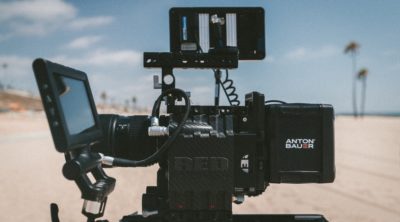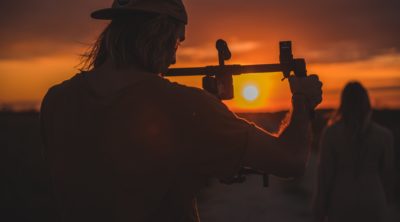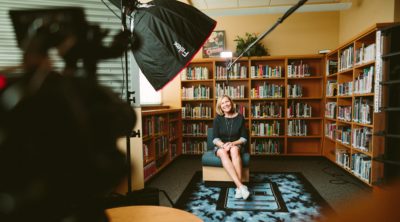< Back to all posts
How to Shoot the Perfect Time Lapse Video
Your client: “I would really love some time lapse video of our new headquarters being built.”
You: “Of course! We’d be happy to help you.”
Did you just cringe a little bit?
Don’t worry, you’re not alone. Time lapse videos can showcase the process of creating something from start to finish. They can also denote the passage of time or serve as a compressed video of a property or facility tour. But in many cases, the client may just say, “Time lapse video is cool. I want some of that in my corporate video.” (Often without knowing what it entails to produce such a video.) Whether it’s for the cool factor or it truly makes sense in the project, time-lapse video can definitely add value to your finished deliverable if you plan ahead.
What Will Be In Your Time Lapse Video?
As with any shot, the first step in making a time-lapse video is deciding not only what you want to shoot, but also what you want the end product to communicate. Do you want to simply tell a “creation story” of a product, building, or another physical object? Are you trying to emphasize the frenetic pace of people or a process? Or are you simply aiming for aesthetic beauty? And will it be used for fancy b-roll, an opening shot, or an integral aspect of your video script?
Some of the more common uses for time-lapse video in corporate videos are:
- • The setup of a trade show booth or store display
- • The construction of a building or large object
- • The assembly or application of a product
- • A medical procedure
- • The movement of people, animals, or vehicles in a particular area
- • The creation of a painting, sculpture, or similar work of art
- • A sunrise/sunset or the movement of clouds or stars across the sky
- The activity in a city scape or other urban area
How Long Will it Take To Record Your Time Lapse Video?
Next, you’ll have to determine how much video footage you will need. Sometimes, the event you’re shooting dictates the length (like the sun going down over a mountain, for example). But other times you’ll need at least a basic idea of how much footage will be needed for your corporate video.
Once you know this, you can figure out how much time you’ll need to devote to shooting the footage. I apologize in advance for involving math. The base calculation is this: figure out the total amount of footage you’ll need (like ten seconds) and multiply it by the number of frames per second you are shooting at. Most cameras shoot in variables of 24, 25 or 30 FPS. Next, once you have your interval setting (how often your camera will take a picture) multiply the number of frames needed by the time interval to determine how long you need the camera to shoot to get your original goal of 10 seconds. This sounds more complicated than it is, I promise!
- • 10 seconds of footage x 30 frames per second = 300 total frames needed
- • 1 image taken every 5 seconds requires at least (300 x 5) =1500 seconds, or 25 minutes.
The Importance of Your Interval
But how do you decide what your photography interval should be?
Again, it partially depends on what you’re trying to accomplish with the time lapse sequence. But here are some rules of thumb to work with based on the subject matter you’re shooting:
- Car traffic or clouds moving “fast”: around 1 second per image
- Sunsets, sunrises, crowd or people traffic, clouds moving “slow”: 1 to 3 seconds per image
- Moving shadows, stars or the sun moving across the sky: 15 to 30 seconds per image
- Plants that grow fast: 90 to 120 seconds per image
- Building construction projects: 5 to 15 minutes per image while work is taking place
If you’re thinking of shooting time lapse video of a process that has a beginning and an end, you should take a different approach: compute the real-time length of the process, determine how much “screen time” you want to allot for the time lapse footage, and work backward from there.
For example, let’s say a client wants you to make a time lapse video of decorating a ballroom for a party or event. You’re told that the process takes two hours from start to finish, and you want to include 40 seconds of time lapse footage in your final product.
- • Convert the real-time figure into seconds: 2 hours x 60 mins/hr x 60 secs/min = 7200 seconds
- • Convert your time lapse footage run time into frames: 40 seconds x 30 secs/frame = 1200 frames
- Divide the first number by the second: 7200 divided by 1200 = 6.
This tells you to take one still image every six seconds.
Time Lapse Equipment, Video Format, and Shutter Speed
If possible, you should obtain a digital camera which already has options that let you not only set the interval for automatic photo-shooting but also input the data used to compute the length of your finished time lapse video. Some cameras even string the images together and spit out the video itself.
Another important decision is the format of the images you’ll be taking. The highest quality format is RAW, but JPG allows you to store more than twice as many images on a single memory card. Some cameras allow you to shoot in what’s known as sRAW + sJPG, which is sort of a middle ground between the other two formats. There’s no hard-and-fast rule for which format to use; just be sure to weigh your memory limitations against your quality standards to figure out the optimal solution.
Of course, you’ll need a sturdy tripod and the proper type of lens for capturing the images you need. Be sure to turn off the Auto Focus feature to avoid unusable shots caused by the camera constantly adjusting the focus. When setting the shutter speed, remember that a higher speed results in less fluidity in movement in the final video. For activity shots, a good rule of thumb is to set the speed slightly less than half of your interval (i.e., a shutter speed of 1.8 works well for a four-second time interval).
Time Lapse Tips and Tricks
Once you are finally ready to begin your time lapse image recording, here are a few more suggestions to keep in mind:
- • Before you start, perform a quick test with a few minutes’ worth of images to make sure you’re getting the effect you want.
- • Once you begin taking photos, feel free to relax—but be sure to check the viewfinder periodically to ensure that changing lighting, wind, or other conditions haven’t altered your shot. Also, check frequently to make sure the camera is still recording just as a safety measure.
- • If you think a tweak is necessary, you can try to gently make the necessary adjustment on the fly in order to avoid messing up your shot and having to start from scratch. Think of adjustments in millimeters, not inches.
- • Once you have your images, consider using your software editing program to colorize and sharpen or blur your video sequence.
- • If the images you take are generic (like clouds or sunsets, for instance) and you don’t end up using all of them in the client’s video, try to secure permission to archive the unused images for use in future videos.
Time lapse videos do require some forethought and additional project man-hours. But when done correctly, they can add a visually attractive element to help make your corporate video stand out. And if you can become proficient in creating time lapse video sequences, it will be one more skill that can help enhance your corporate videos.
Need a crew to shoot some time lapse video of a particular scene or location? Get a quote from us today.







Leave a Reply